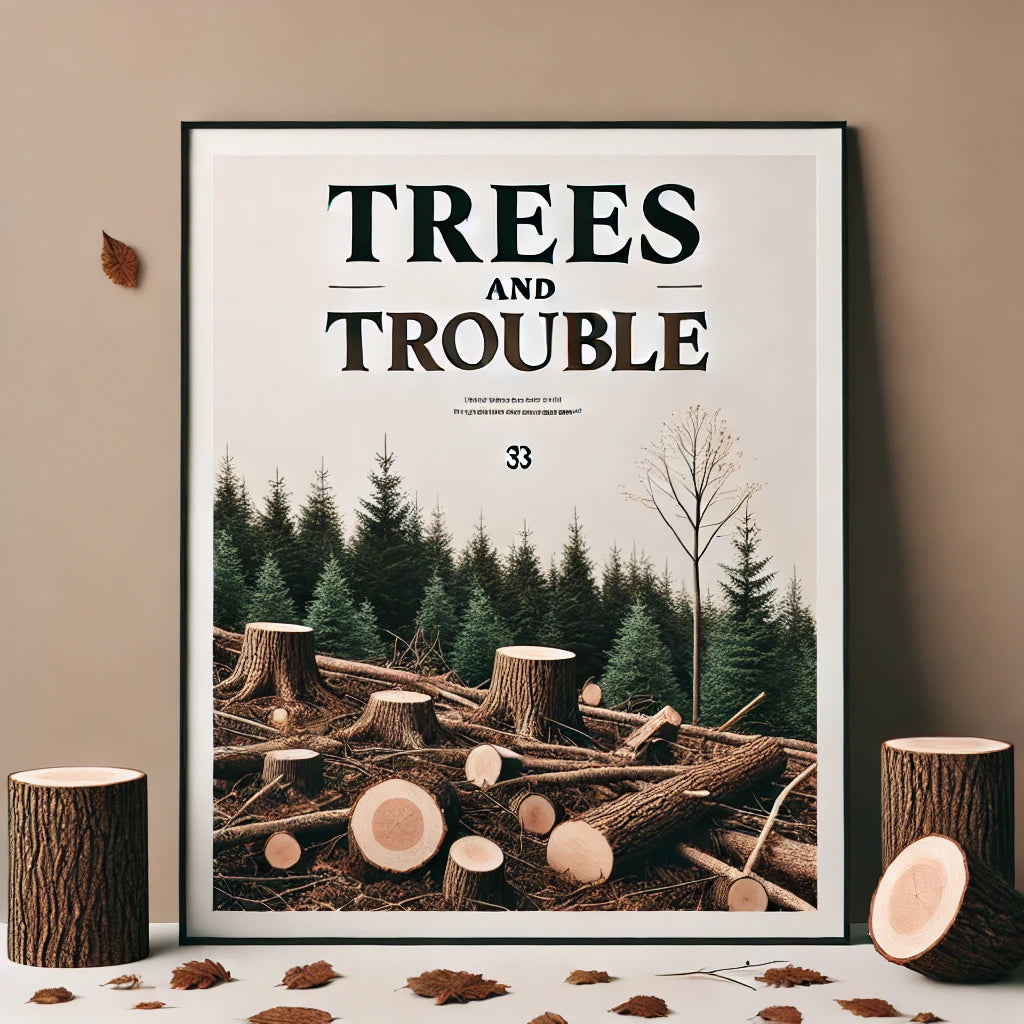
Trees & Trouble: Why Deforestation Matters 🌳🚨

Imagine our planet as a vibrant green tapestry, with forests acting as its life-giving threads. Now, picture those threads being pulled out, leaving behind patches of barren land.
That’s deforestation in action—a massive, global issue where trees are cut down at alarming rates, threatening our environment and everything that relies on it. This isn’t just about losing trees; it’s about disrupting entire ecosystems, harming wildlife, and fueling climate change. Ready to uncover the full impact of deforestation and discover how you can be a part of the solution? Let’s dig in and explore the pressing need to protect our planet’s green cover!
Top 7 Hacks to Combat Deforestation
- Support Sustainable Products: When shopping for paper, wood, or furniture, look for products certified by organizations like the Forest Stewardship Council (FSC). These labels guarantee that the products come from responsibly managed forests, which help preserve our planet’s precious resources.
-
Reduce Paper Use: Opt for digital alternatives to cut down on paper waste. Switch to e-bills, digital magazines, and online notes. Every paperless choice reduces the demand for logging and conserves forest resources.

- Adopt a Plant-Based Diet: Switching to a plant-based diet can significantly lower the demand for deforested land used for animal agriculture. Less meat means less need for pasture and feed crops, which helps save forests and reduce greenhouse gas emissions.
- Get Involved in Tree Planting: Join local tree-planting initiatives or start your own community project. Trees not only absorb carbon dioxide but also restore habitats for wildlife, improve air quality, and enhance local landscapes.
- Support Reforestation Efforts: Contribute to organizations that focus on reforestation and afforestation projects. Your donations help fund tree planting, habitat restoration, and conservation activities that counteract the effects of deforestation.
- Reduce Your Carbon Footprint: Lowering your carbon footprint can lessen the indirect drivers of deforestation, such as climate change and industrial activity. Simple steps like using energy-efficient appliances and reducing car travel can make a difference.
- Advocate for Forest Protection Policies: Use your voice to support legislation and policies aimed at protecting forests and promoting sustainable land use. Advocating for stronger environmental regulations helps ensure that forests are preserved for future generations.

Top 5 Dos and Don’ts for Fighting Deforestation
Dos:
- Do Educate Yourself and Others: Learn about different forest ecosystems and their role in global biodiversity. Share this knowledge to raise awareness and encourage others to take action against deforestation.
- Do Choose Eco-Friendly Brands: Support businesses that prioritize sustainability and have transparent supply chains. Look for brands that actively work to reduce their environmental impact and avoid deforestation.
- Do Promote Urban Green Spaces: Advocate for the creation and maintenance of green spaces in urban areas. Urban forests and community gardens help offset some of the effects of deforestation and provide valuable habitats for city-dwelling wildlife.
- Do Recycle and Reuse: Properly recycle paper and wood products to reduce the demand for new raw materials. Reusing items and opting for recycled products helps decrease the pressure on forests.
- Do Participate in Local Conservation Efforts: Join or support local conservation groups that focus on forest preservation and restoration. Community involvement can drive impactful changes and help protect local natural resources.
Don’ts:
- Don’t Support Unsustainable Practices: Avoid products and companies that contribute to illegal or unsustainable deforestation. Research the sources of your products and opt for those that support responsible forest management.
- Don’t Waste Resources: Be mindful of your consumption of paper and wood products. Avoid excessive use and waste to reduce the overall demand for forest resources.
- Don’t Overlook Indigenous Rights: Recognize and support the rights of indigenous communities who often live in and manage forests. Their traditional knowledge and stewardship are crucial for effective conservation.
- Don’t Rely Solely on Individual Actions: While personal actions are important, push for systemic change by supporting policies and practices that address the root causes of deforestation on a larger scale.
- Don’t Forget to Spread the Word: Raise awareness about the impacts of deforestation and ways to combat it. Engaging others in the conversation helps build a broader movement for forest conservation.

Top 10 Impacts of Deforestation on Biodiversity and Climate
- Loss of Habitat: Deforestation destroys the natural homes of countless species, leading to habitat loss and pushing many plants and animals towards extinction. Forests are crucial for the survival of a diverse range of species.
- Climate Change Acceleration: Trees absorb carbon dioxide, a major greenhouse gas. When forests are cut down, this stored carbon is released back into the atmosphere, contributing to global warming and climate change.
- Disruption of Water Cycles: Forests play a key role in regulating water cycles by absorbing and releasing water. Without trees, regions can experience altered rainfall patterns, increased droughts, and more severe flooding.
- Soil Erosion: Tree roots help stabilize the soil. Without them, the land becomes prone to erosion, which can lead to loss of fertile topsoil, reduced agricultural productivity, and increased sedimentation in rivers and lakes.
- Altered Ecosystems: Forests support complex ecosystems where every species plays a role. Deforestation disrupts these ecosystems, leading to imbalances that affect food chains and ecological processes.
- Increased Carbon Emissions: The burning or decomposing of trees releases large amounts of carbon dioxide into the atmosphere, exacerbating the greenhouse effect and accelerating climate change.
- Loss of Medicinal Plants: Many plants with potential medicinal properties are found in forests. Deforestation threatens these species, reducing our chances of discovering new treatments and medicines.
- Impacts on Indigenous Communities: Indigenous peoples often depend on forests for their livelihoods, culture, and traditions. Deforestation disrupts their way of life and threatens their cultural heritage.
- Decreased Air Quality: Forests help filter pollutants from the air. Without them, air quality deteriorates, leading to respiratory problems and health issues for both humans and wildlife.
- Economic Costs: The long-term economic impacts of deforestation include reduced agricultural productivity, increased costs for disaster recovery, and loss of ecosystem services that are vital for human well-being.

Deforestation is more than a loss of trees—it's a global challenge with profound consequences for our climate, biodiversity, and communities. By taking action to support forest conservation and sustainable practices, you can help protect our planet’s green lungs and ensure a healthier future for all. Let's be the change and keep our world lush and vibrant! 🌳🌟
